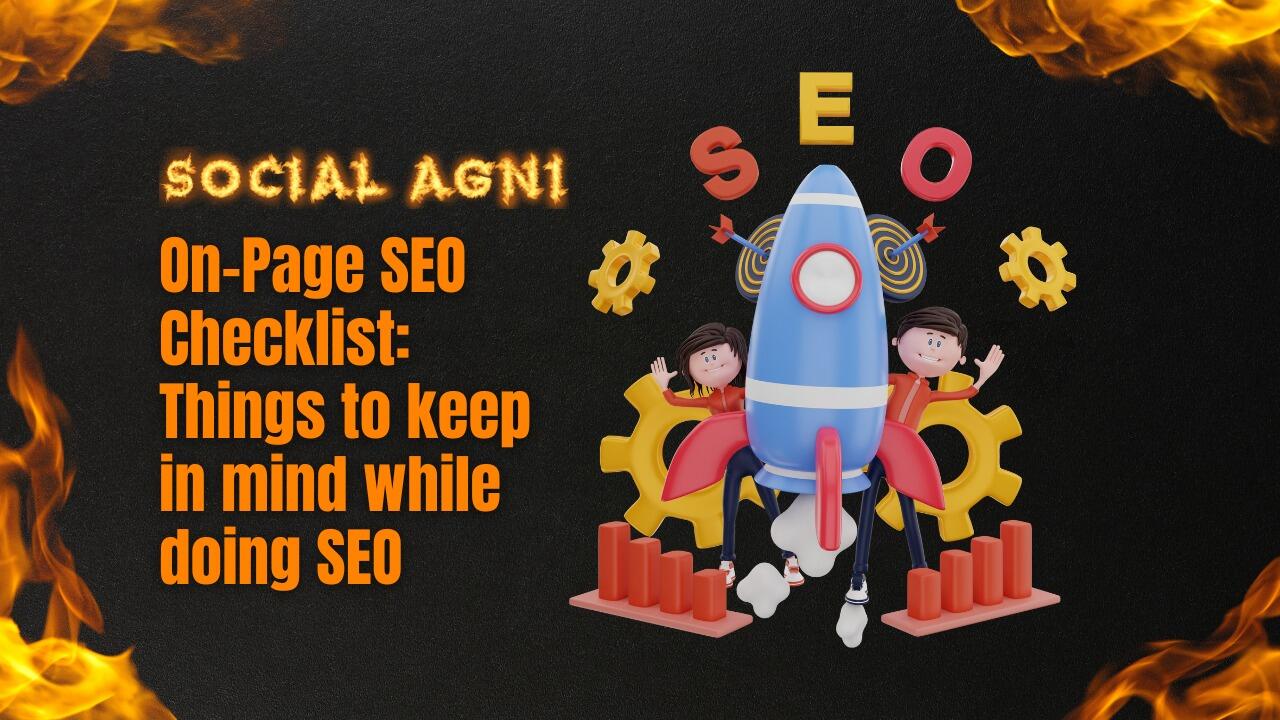You might have the best website in the world, but if nobody knows about it, then what’s the point? Search Engine Optimization (SEO) is how you make sure your site comes up when people search for relevant keywords on Google, Bing, and other search engines. This can be a difficult and time-consuming process, but our on-page SEO checklist will make it easier for you! How On-Page SEO benefits you? There are many benefits to On-Page SEO, including: Increased traffic: By optimizing your website for search engines, you can increase your website’s visibility in search results, which can lead to more clicks and more traffic. Improved rankings: Optimizing your website’s content and structure can help improve your website’s Rankings in search results, which can lead to more traffic. Greater ROI: Since On-Page SEO can help improve your website’s visibility and Rankings, it can also lead to a higher ROI from your SEO campaigns. Increased brand awareness: By optimizing your website for search engines, you can help increase your brand’s awareness among potential customers who are searching for relevant keywords. Better user experience: By optimizing your website for search engines, you can make it easier for users to find the information they need on your site, which can improve their overall experience with your site. What to Avoid While Doing On-page SEO a) Don’t stuff your keywords Stuffing your keywords into your content in an attempt to game the system will not only turn off your readers, but it will also get you penalized by Google. A better approach is to focus on creating quality content that naturally incorporates your target keywords. b) Don’t neglect your title tag Your title tag is one of the most important elements on your page, so don’t neglect it! Make sure your title is clear, concise, and includes your target keyword. c) Don’t forget about meta tags Meta tags are another important element of on-page SEO. Be sure to include relevant and keyword-rich meta tags on each page of your site. d) Don’t overlook Alt text Alt text is used to describe images for those who are unable to see them. This is important for both accessibility and SEO purposes. Be sure to include Alt text for all images on your website. e) Don’t forget about internal linking Internal linking is important for both usability and SEO purposes. Be sure to include links to other pages on your website within your content. This will help users navigate your site and help search engines crawl your pages more effectively. f) Don’t forget to optimize your URLs Your URL should be clear, concise, and include your target keyword. This will help both users and search engines understand what your page is about and make it more likely that your page will rank for that keyword. g) Don’t forget about social media Social media is important for marketing as well as for SEO purposes. Be sure to include links to your social media profiles on your website and share your content on social media. This will help you reach a larger audience and potentially increase your search engine ranking. h) Don’t neglect your mobile website With more and more people using mobile devices to access the internet, it’s important to make sure your website is optimized for mobile. This includes having a responsive design and ensuring that your content is easy to read on a small screen. i) Don’t forget about local SEO If you’re targeting locally, be sure to optimize your website for local SEO. This includes adding your business to local directories, claiming your Google My Business listing, and adding relevant keywords to your website. j) Don’t forget about voice search Voice search is an increasingly popular way to search the internet, so it’s important to optimize your website for voice search. This means using natural language and long-tail keywords throughout your content. On-Page SEO Checklist On-page SEO is the process of optimizing your website’s pages and content to make them more search engine friendly. This includes things like choosing the right keyword phrases to target, making sure your pages are well-structured and easy to read, and ensuring that your site is free of technical errors. To help you optimize your site for better search engine visibility, we’ve put together this on-page SEO checklist. Use it as a guide when improving your own website, and you should see a noticeable difference in your search engine rankings. 1. Choose the right keyword phrases The first step in any on-page SEO campaign is keyword research. You need to find out what keywords or key phrases people are using to search for businesses like yours. Once you know this, you can then start incorporating these keywords into your website’s content, title tags, meta descriptions, and other places where they’ll be noticed by search engines. 2. Use keywords throughout your content: Once you have targeted a couple of valuable keywords, make sure to use them in your content. Place them in the title, in the body, and in the tags and metadata. 3. Optimize your title tags and meta descriptions Your title tags and meta descriptions are two of the most important elements on your website when it comes to on-page SEO. These are the short descriptions that appear in search engine results, so it’s important to make them as keyword-rich and interesting as possible. Write headlines that are clear and concise and include relevant keywords. Likewise, make sure your meta descriptions are interesting and informative so that people will want to click through to your site. 4. Structure your pages well Search engines like websites that are well-structured and easy to navigate. This means using things like headings and subheadings to break up your content, and using internal linking to help search engines understand the relationship between your pages. 5. Make sure your website is mobile-friendly With more and more people using mobile devices to access the internet, it’s important to make sure your website is optimized for these
